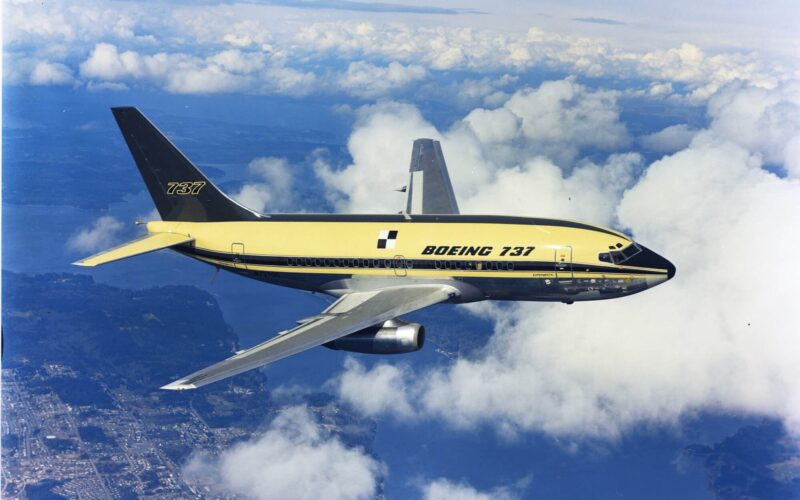With 10,575 aircraft delivered, the Boeing 737 family was until recently the most popular airplane ever. It all started on April 9, 1967, when the Boeing 737-100 took off for the first time.
In the 1960s, Boeing began to study the design of a short and medium-haul twin-jet aircraft to complete the larger Boeing 707 and 727 airliners. Its main competitors would be the BAC-111 and the DC-9.
The design started in May 1964, with the objective to build an aircraft capable of transporting 60 passengers over a distance of 1,200 kilometers. In February 1965, Lufthansa (LHAB) (LHA) ordered 22 of the upcoming airliner but asked for the capacity to be increased to 100 passengers. Boeing agreed to Lufthansa’s (LHAB) (LHA) request and by the time the first prototype rolled out of the factory, in December 1966, the aircraft had gone bigger.
The aircraft shared 60% of common parts with the Boeing 727, and was powered by the same engine, the Pratt & Whitney JT8D, with the difference that the two engines were placed under the wings and not by the tail. The empennage, a classic fin, replaced the T-tail of the Boeing 727.
On April 9, 1967, the Boeing 737-100 registered N-73700 took off for its maiden flight at the King County International Airport (BFI), then known as Boeing Field, near Seattle. The flight lasted two and a half hours, before the aircraft landed at Paine Field (PAE), in Everett. In total, 6 prototypes of the Boeing 737-100 participated in the testing campaign. The first prototype would then be used by NASA for 30 years.
The 737-100 was certified by the U.S. Federal Aviation Administration in December of the same year after more than 1,300 hours of flight testing.
The launch customer, the German airline Lufthansa (LHAB) (LHA) , began commercial service on February 10, 1968, marking the beginning of a long family of aircraft. The -100 version saw only 30 planes being built. The longer version, the -200, was much preferred by airlines, with 1,114 aircraft delivered.

